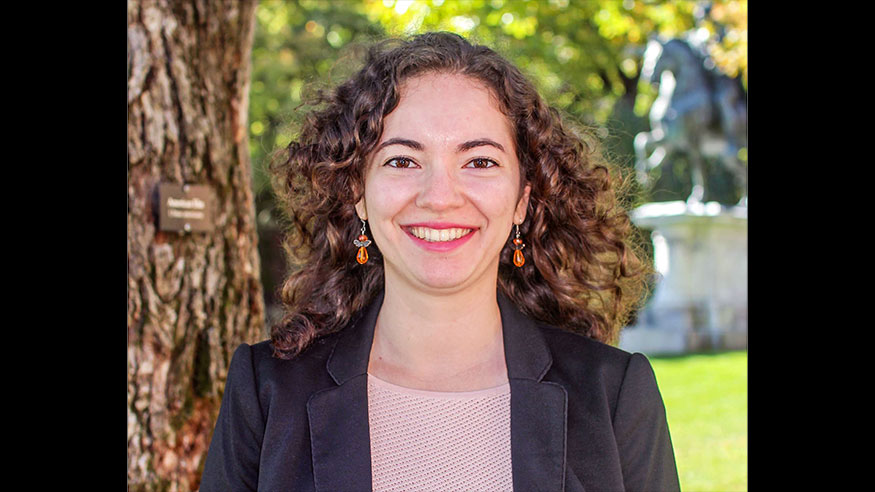By Tung Nguyen, Online Editor
Mathematics and biology are two subjects that many non-scientists would think of as completely separate fields. Yet, by using specific mathematical equations, biologists can understand more of how
protein molecules move and organize for cells to function properly.
Veronica Ciocanel, a postdoctoral fellow with the Mathematical Biosciences Institute at The Ohio State University, presented her recent research on this subject to the Ohio Wesleyan community on April 12.
Titled “Modeling the Cytoskeleton Roads in Transport and Localization of Protein Cargoes,” Ciocanel
spoke in the Schimmel/Conrades Science Center as part of this year’s Science Lecture Series.
At the beginning of her talk, Ciocanel laid out two main questions: How do the protein molecules move in the precise time and spatial scales? What are the mechanisms of transport?
“Intracellular transport of different cargoes is fascinating,” Ciocanel said. “Mathematical techniques can help us study transport mechanism.”
As Ciocanel explained later in her talk, cargoes switch between different dynamical states and interact differently with motors and filament roads. Microtubules were used as an example for this biological process. Microtubules are component of the cytoskeleton and are vital in the means of creating
particular platforms for many intracellular transportation processes.
“Microtubules are the longest and largest in diameter and they are kind of like a highway,” she said. “Because they are the longest, microtubules are important in cargoes transferring across the cells.”
Ciocanel also answered her second question by pointing out that active transport on microtubules is a key mechanism. Therefore, investigating the role of microtubule geometry is considered essential.
Ciocanel explained the fundamental mathematical equations to draw the transport models of mRNA (messenger RNA) along the microtubules, along with the help of a specific microscopy data analysis. The analysis shows that these orientations are key in predicting how the mRNA particles spread.
“Differential equations modeling gives us insight into the mechanisms of the messenger RNA journey along microtubule highways and ultimately into its localization, which ensures proper embryo development,” she said. “In neurons, stochastic simulations are used to understand how neurofilaments
navigate axons and their constrictions, to maintain a healthy speed of neuronal communication.”
“I never experienced lecture talk like this before,” said Andy Xie, an OWU senior. “It made me realize the importance of collaboration and the value of open source knowledge.”
